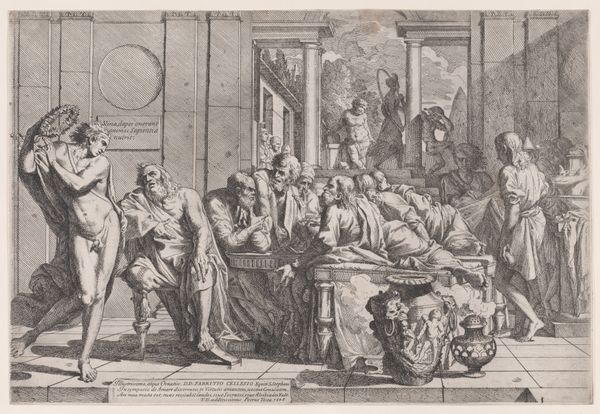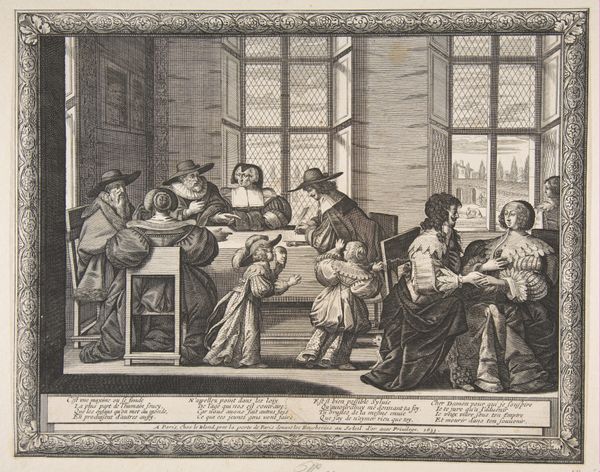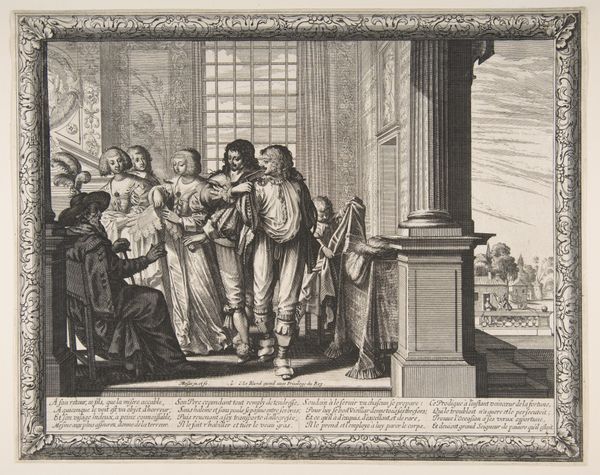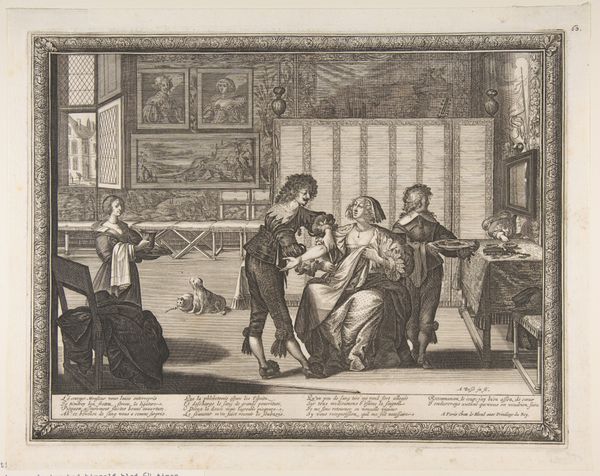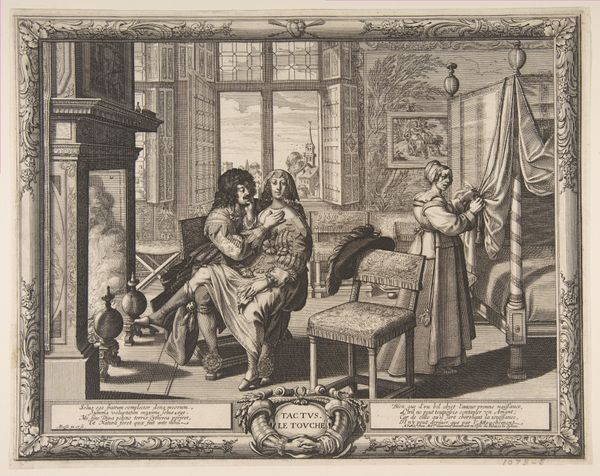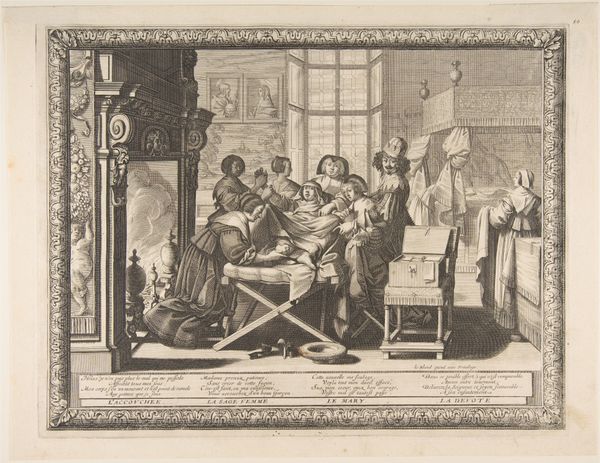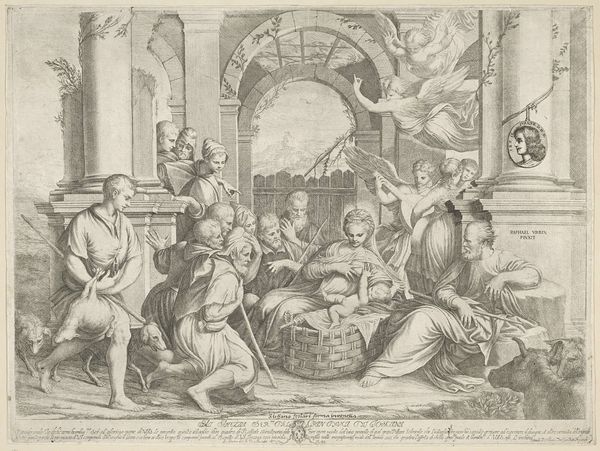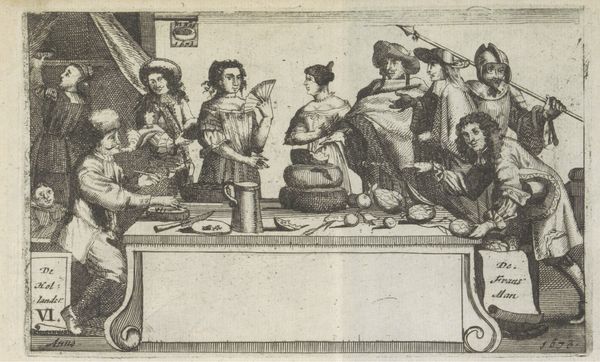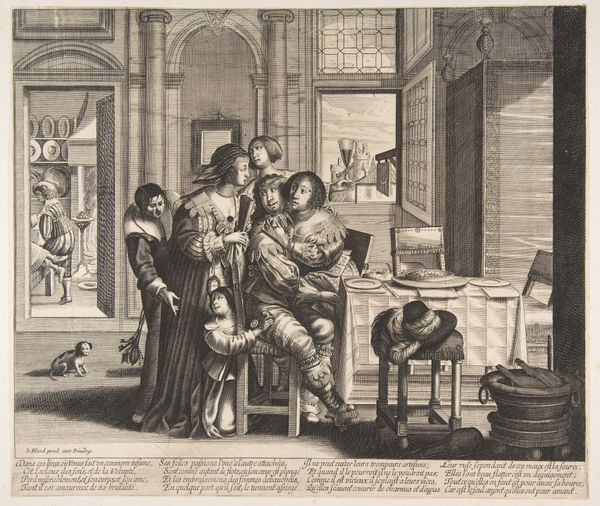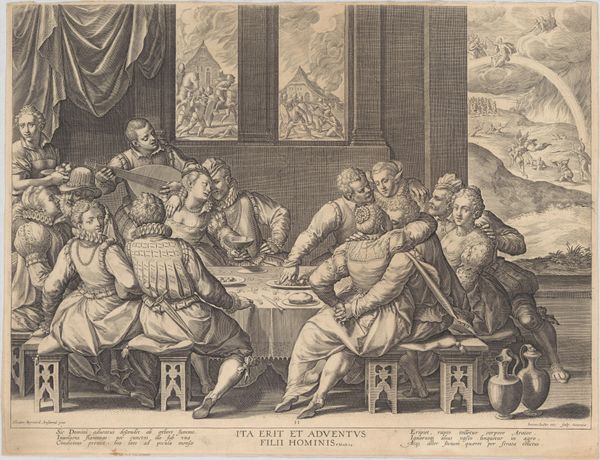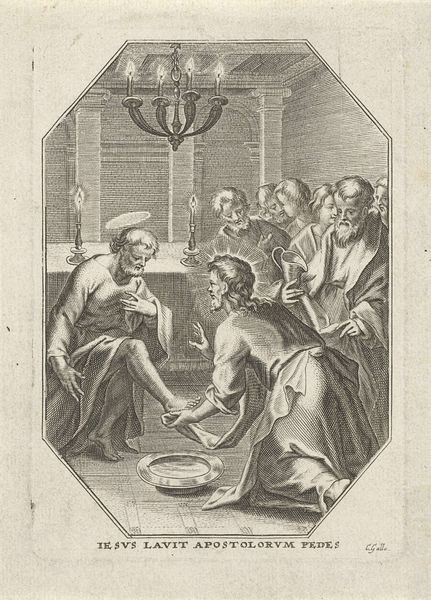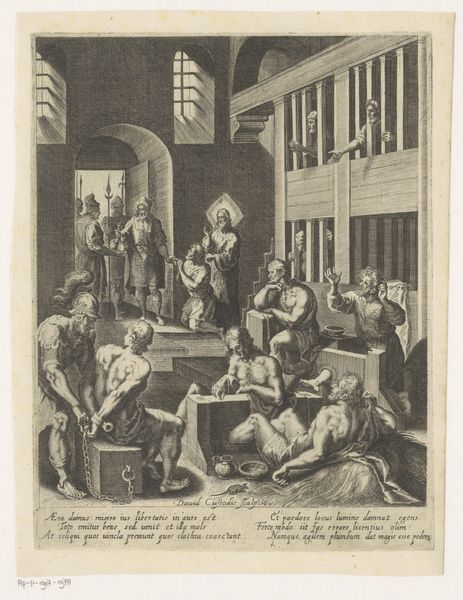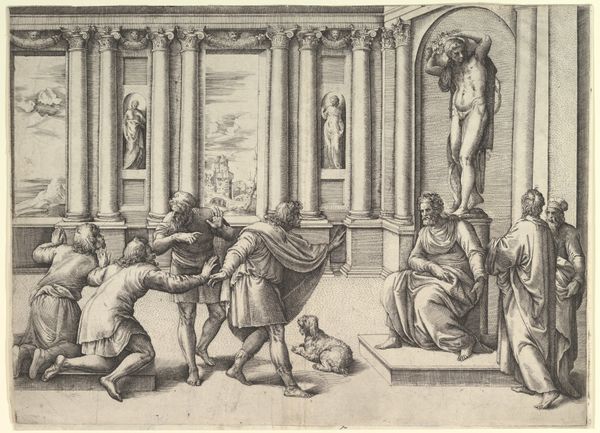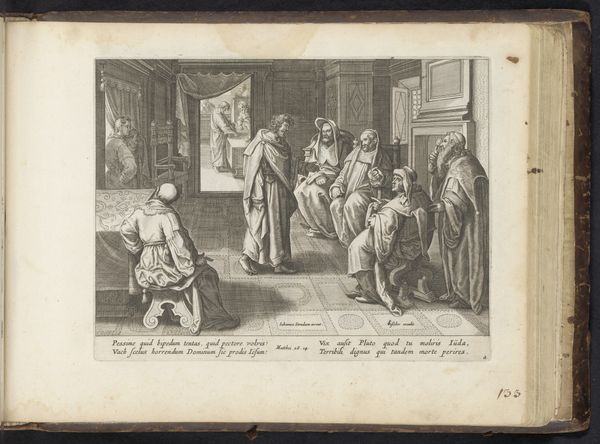
drawing, print, engraving
#
portrait
#
drawing
#
aged paper
#
toned paper
#
baroque
# print
#
men
#
pen work
#
genre-painting
#
engraving
Dimensions: sheet: 9 15/16 x 12 7/8 in. (25.3 x 32.7 cm)
Copyright: Public Domain
Curator: Here we have Abraham Bosse’s “Shoemaker,” also known as "Le Cordonnier", an engraving created sometime between 1627 and 1638. It resides at the Metropolitan Museum of Art in New York. Editor: It's a delightful domestic scene, yet slightly…absurd? The perspective seems off, but it kind of enhances the almost theatrical staging. I find myself smiling. Curator: Indeed. Bosse, a prominent figure in Baroque printmaking, presents us with a fascinating study of social dynamics. Notice how the composition is divided into distinct vignettes, each with its own spatial logic. Semiotically, it reads as a layered narrative. Editor: Right! It’s like multiple stories unfolding at once in the same room. The contrast between the kneeling shoemaker and the reclining lady—her puffed sleeves alone are a character! There’s a sense of artificiality. Do you think this was meant to be satirical? Curator: It's complex. There's a subtle commentary on class and courtship rituals. Observe the use of line: precise, controlled, creating a sense of depth despite the flattened perspective you mentioned. It evokes contemporary emblem books and theater design, signifying societal "roles". Editor: The way Bosse handled the textiles is remarkable. And look at the details of the window that reveals some gossiping bystanders and how he played with shadow and light despite its two dimensional design. Did prints like this served the function of photography during the 17th century? I imagine people enjoying the "news" presented in this manner? Curator: Quite possibly. And furthermore, by employing toned paper, the artist has already created visual texture, highlighting that the drawing comes to us not untouched by age, yet enhanced. The crispness of his line is still there, as are the little narratives embedded within the larger story. The composition guides our eyes strategically around the page; to what end does each unique viewer determine... Editor: Exactly, and there is still something about its theatrical design, staging its various protagonists in what amounts to frozen interactions that make the viewer wonder what comes next, what dialogue will be spoken that the viewer has been barred from. It makes me want to know more... Curator: Ultimately, Bosse offers us a microcosmic view into a bygone era, prompting us to analyze its power structures through the lens of aesthetic form and semiotic construction. Editor: It is an image that begs you to consider, what is really going on, the various perspectives employed create this strange effect in what, at its base, might merely be a sales transaction, it asks you what the power dynamics at play in capitalism, consumerism, labor relations are, as well as how people interact and deceive each other...
Comments
No comments
Be the first to comment and join the conversation on the ultimate creative platform.
